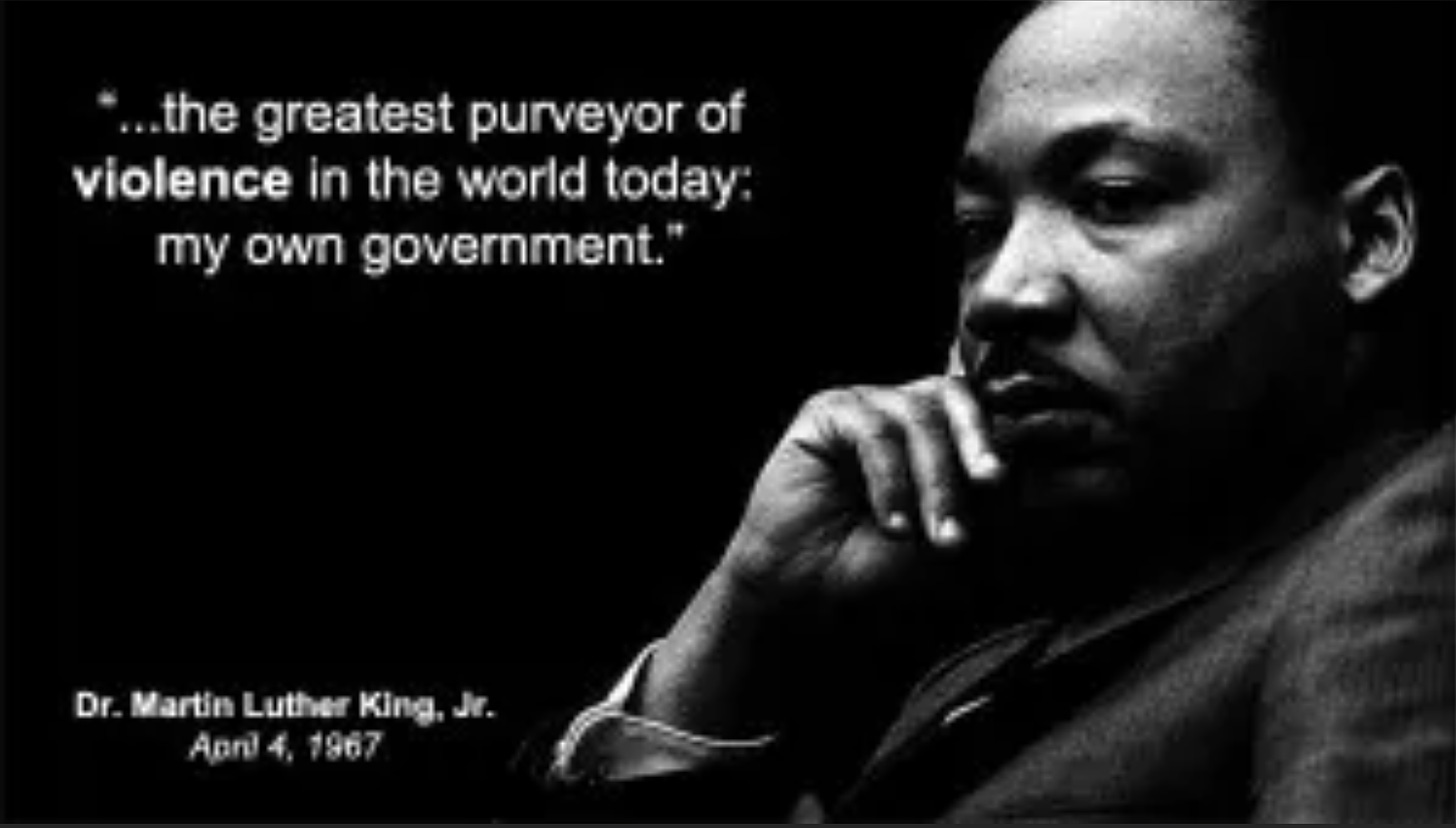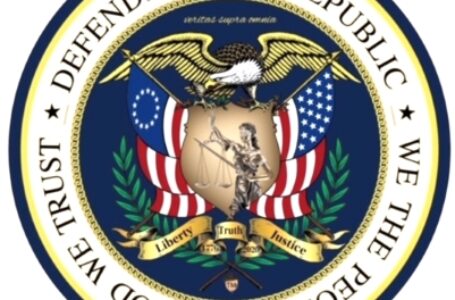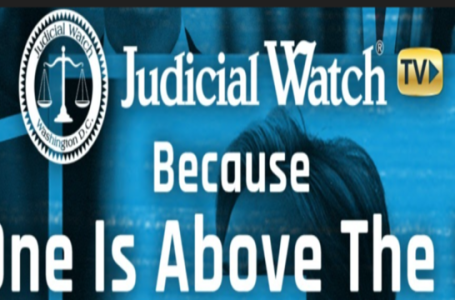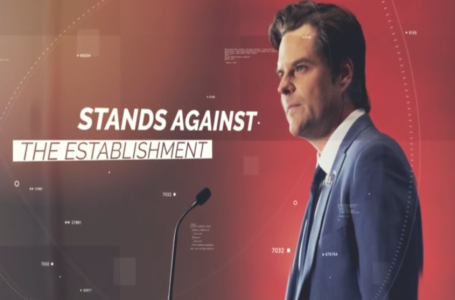Purveyors of Hate

Real life observations from the front lines of the information wars

The two young people who help us in so many ways with the daily horse chores have this weekend off. Jill and I still travel so much, and when we are off the farm these two often have to pick up all the responsibilities for a week or more, so we try to give them time off when possible. The last two days have been particularly hard on Jill, as some people who we have previously treated as allies have written, published, and done podcasts together in which they have repeatedly lied and intentionally defamed me. As a consequence, she has been a bit down, and I have been handling the horse chores.
Some of you know who these people are, others do not, and I have no interest in bringing further attention to their slander and defamation.
Working with the horses (stallions, mares, foals), and just walking about the farm watching the Robins hunting bugs in the grass and old leaves, and the black vultures swooping and wheeling above in a blue windy sky gives me a deep sense of peace and connectedness. Somehow exchanging breaths with a young stallion, looking into his eyes, scratching him on the shoulder or under his jaw puts things in perspective for me. And so caring for the horses over the last two days has helped me to deal with the shock, grief, and (frankly) depression that comes with these types of verbal and written attacks – particularly when propagated by people whom I once trusted and believed were colleagues with shared objectives.
This essay is part of my attempt to come to terms with the verbal and written violence which others feel necessary to spread about me, Jill, and so many others- friends and foes. I hope you find it useful to you, our Substack customers.
There are apparently angry people who just have a need to hate someone, and almost anyone will do. I am not one of those, although there are plenty of people in my life that I could focus and obsess over if I chose to do so. And when I was younger, I did have a lot of anger and hate. Being driven into a nervous breakdown and subsequent post traumatic stress disorder by lying, greed and nefarious behavior will do that to people. But over time, as I have aged, mellowed, and learned from life, wife and horses, I have come to understand that if one seeks revenge, you should first dig two graves (one for yourself). Anger and hate are like battery acid to your soul.
Anger and hate have many psychological sources. In some cases, a distorted sense of competitiveness, jealousy and envy are triggers for obsessive hate. For others, a sense of lack of fairness – why should someone else be getting attention when they are not? And in other cases, stoking hate and outrage are business models.
Defamation and malicious defamation is wrong.
Defamation is the act of communicating to a third party false statements about a person, place, or thing that results in damage to its reputation. It can be spoken (slander) or written (libel). It constitutes a tort or a crime. The legal definition of defamation and related acts as well as the ways they are dealt with can vary greatly between countries and jurisdictions (what exactly they must consist of, whether they constitute crimes or not, to what extent proving the alleged facts is a valid defense).
Following the Second World War and with the rise of contemporary international human rights law, the right to a legal remedy for defamation is rooted in Article 17 of the United Nations International Covenant on Civil and Political Rights (ICCPR), which states that:
- No one shall be subjected to arbitrary or unlawful interference with his privacy, family, home or correspondence, nor to unlawful attacks on his honour and reputation.
- Everyone has the right to the protection of the law against such interference or attacks.
This implies a right to legal protection against defamation; however, this right co-exists with the right to freedom of opinion and expression under Article 19 of the ICCPR as well as Article 19 of the Universal Declaration of Human Rights.[17] Article 19 of the ICCPR expressly provides that the right to freedom of opinion and expression may be limited so far as it is necessary “for respect of the rights or reputations of others”.[17] Consequently, international human rights law provides that while individual’s should have the right to a legal remedy for defamation, this right must be balanced with the equally protected right to freedom of opinion and expression. In general, ensuring that domestic defamation law adequately balances individuals’ right to protect their reputation with freedom of expression and of the press entails:[18]
- Providing for truth (i.e., demonstrating that the content of the defamatory statement is true) to be a valid defense,
- Recognizing reasonable publication on matters of public concern as a valid defense, and
- Ensuring that defamation may only be addressed by the legal system as a tort.
In most of Europe, article 10 of the European Convention on Human Rights permits restrictions on freedom of speech when necessary to protect the reputation or rights of others.[19]
Aside from it being a familiar concept to those studying or knowing law, defamation, or “slander”, is also known as a “smear campaign” in psychology.[23] Those who suffer from narcissism, sociopathy, and psychopathy use it as a weapon to discredit their victims, typically when they feel you are about to expose them, or are dangerous, but oftentimes it can happen with no known motive beyond psychological projection.[24][25]
For further insights into the rise and predominance of psychopaths in the USA (including corporate and business “leadership”), please consider reading the following substack essay.
So, if that has now clarified the meaning and underlying psychology of “defamation”, what is the meaning and relevance of malice?
As Jill and I live and write in Virginia, what matters to us is the definition of malice which applies in Virginia. So lets turn to the Virginia Defamation Law Blog for clarification.
Actual malice is an important concept in Virginia defamation law. Public figures, public officials, and limited-purpose public figures all must prove that a defamatory publication was made about them with actual malice as part of their case in chief in any defamation action brought on the basis of that publication. Even private plaintiffs often seek to prove actual malice, such as when trying to show that a defendant lost or abused a qualified privilege. As discussed earlier on this blog, “actual malice” in this context means something different than spite or ill will. When a defendant publishes a false and defamatory statement with actual malice, it means the defendant knew the statement was false or, at a minimum, acted with reckless disregard as to truth or falsity. Recklessness amounting to actual malice may be found, for example, where a publisher fabricates an account, makes inherently improbable allegations, relies on a source where there is an obvious reason to doubt its veracity, fails to pursue the most obvious available sources for corroboration, or deliberately ignores evidence that calls into question his published statements.
So how do you prove actual malice? As you might imagine, it’s not very often that the defendant openly admits to intentionally lying. Therefore, most of the time, plaintiffs must resort to indirect and circumstantial evidence to prove their claims. They can do this by using-
“all the relevant circumstances surrounding the transaction…provided they are not too remote, including threats, prior or subsequent defamations, subsequent statements of the defendant, circumstances indicating the existence of rivalry, ill will, or hostility between the parties, facts tending to show a reckless disregard of the plaintiff’s rights, and, in an action against a newspaper, custom and usage with respect to the treatment of news items of the nature of the one under consideration.”
(See Herbert v. Lando, 441 U.S. 153, 164 n.12 (1979) (quoting 50 Am. Jur. 2d Libel and Slander § 455 (1970))). To obtain such evidence in advance of trial, parties may resort to the discovery process, using tools such as interrogatories, requests for production of documents, and third-party document subpoenas.
Courts tend to allow fairly broad discovery. The general rule is that parties may obtain discovery regarding any nonprivileged matter that is relevant to any party’s claim or defense and proportional to the needs of the case. In determining proportionality, courts will look at factors such as the importance of the issues at stake in the action, the amount in controversy, the parties’ relative access to relevant information, the parties’ resources, the importance of discovery in resolving the issues, and whether the burden or expense of the proposed discovery outweighs its likely benefit. (See Fed. R. Civ. P. 26(b)(1)).
If you’re trying to collect evidence relevant to actual malice, here are some considerations as you draft your discovery requests:
1. Don’t limit yourself to documents pre-dating the publication date.
Sure, it seems to make sense that when trying to prove the defendant’s state of mind at the time of publication, you’d want to focus on evidence that existed prior to that time. Many courts, however, have allowed discovery of evidence that arose after the fact, such as the defendant’s own statements. If a defendant posts a false and defamatory comment on Facebook and then later brags to a friend in a text message about spreading lies about the plaintiff, that text message might be probative of actual malice even though the text didn’t come into existence until after the defamatory statement was written. In a New York case a few years ago, a book author met with her sources after getting sued and offered to pay them for affidavits supporting the allegations in her book. The court found this evidence relevant to the question of actual malice. (See Stern v. Crosby, 645 F. Supp. 2d 258 (S.D.N.Y. 2009)). What you’re trying to prove is the defendant’s state of mind at the time of publication, but there’s no rule limiting you to evidence pre-dating the publication to prove this.
2. Determine whether the defendant had a profit motive to lie about you or your business.
Having a general profit motive, without more, is not sufficient to show actual malice. Virtually every newspaper publishes articles to make money; nothing about that indicates malicious intent. On the other hand, you may be able to uncover information about the defendant’s specific profit motive to publish stories about you, the plaintiff. At a minimum, you should be able to seek discovery into any evidence of a profit motive to publish stories about you irrespective of truth. Most courts apply a broad relevance test during the discovery phase and would likely find such documents relevant and discoverable.
3. Look for evidence of a preconceived narrative.
Remember the Rolling Stone case? Rolling Stone published a story a few years ago about a supposed gang rape at a University of Virginia fraternity house. The magazine eventually retracted the story after a Columbia Journalism School report that said the magazine failed to take basic journalistic steps to verify the account of the main witness, a woman identified only as “Jackie.” A UVA administrator sued the magazine and won $3 million after arguing to the jury that the author of the story had a preconceived narrative and set out to write an article about institutional indifference to claims of sexual assault and rape. The author was so focused on telling the story she wanted to tell, the plaintiff argued, that she paid little attention to the actual facts, willfully ignoring any that disproved her preconceived storyline. Evidence of a preconceived narrative may be relevant to the actual malice inquiry (See Harris v. City of Seattle, 152 F. App’x 565, 568 (9th Cir. 2005) (“[E]vidence that a defendant conceived a story line in advance of an investigation and then consciously set out to make the evidence conform to the preconceived story is evidence of actual malice, and may often prove to be quite powerful evidence.”) (quoting Rodney A. Smolla, Law of Defamation § 3:71 (2d ed. 2005)).
4. Investigate the defendant’s fact-checking process.
When you’re trying to prove that an article or other statement was published with a subjective awareness of probable falsehood, it stands to reason that you should be permitted to inquire into the publisher’s fact-checking and editorial practices. While true that actual malice cannot be proven merely by showing that a “reasonably prudent” publisher would have conducted a more thorough investigation before publishing, evidence showing a departure from journalistic standards would still be relevant to the inquiry and therefore discoverable. (See Hatfill v. New York Times Co., 532 F.3d 312, 325 (4th Cir. 2008) (explaining that although the mere “failure to exercise ordinary care” does not show actual malice, “evidence of the publication of a completely fabricated story, or of one based entirely on an unverified anonymous telephone call; or publication where there are obvious reasons to doubt the veracity of the informant” can show actual malice)).
In the United States, historically there were strong legal protections against defamation and malicious defamation, and in many states (including Virginia) these statutes derive from the history of dueling – hence use of the phrase “fighting words” in defining defamation. Unfortunately, active lobbying by corporate media eventually yielded the Supreme Court case of New York Times Co. v. Sullivan, 376 U.S. 254 (1964), which then gave rise to the ability of corporate media and others to become less restricted by defamation law when otherwise defaming public figures, although this is overcome if the defamation is repeatedly performed or otherwise meets the criteria of maliciousness.
Distinguishing Public Officials from Public Figures
In every defamation case, it’s necessary to determine whether the plaintiff should be treated as a public figure, a public official, or a regular Average Joe. This is because “public” plaintiffs face a much higher burden of proof than “private” plaintiffs. A private plaintiff normally only needs to prove that a defamatory statement was made with negligence in regard to whether the statement was true or false, whereas a public plaintiff generally needs to show that the defendant acted with malice, which is much more difficult to prove than negligence. There are many justifications for the discrepancy, but the most frequently cited are that (a) public plaintiffs voluntarily assumed the spotlight, and they should know that having people talk loosely about them comes with the territory, and (b) by virtue of their notoriety, public plaintiffs have more opportunities to rebut defamatory statements. Courts sometimes use the terms “public figure” and “public official” interchangeably, but they are conceptually different, and different considerations determine whether a plaintiff should be treated as one or the other.
The main distinguishing feature is that public officials are not necessarily attention-seeking, and as a result, they are not always treated as “public” plaintiffs who would need to show malice in order to prevail in a defamation action.
I am very grateful for the existence of Substack, for without this platform Jill and I would have no way to support our efforts regarding the COVIDcrisis and related topics. And no, we are not making millions of dollars off of Substack. Any who assert this are just trying to smear us without justification. The essays are free to all, and our only revenue from Substack is from those who volunteer to purchase a subscription. No grifting. No vitamins or drugs being sold by us.
However, there is a dark side. Substack policies do not include an oversight and censorship function, which would otherwise subject them to some of the controversial nuances (involving what constitutes a publisher) of Section 230 of Title 47 of the United States Code that was enacted as part of the Communications Decency Act of 1996, which is Title V of the Telecommunications Act of 1996. There does not appear to be any way to hold Substack accountable for any objectionable (or defamatory) content posted by a Substack author, because Substack leadership refuses to review and/or censor content. This is a sword that cuts both ways, and the practical consequences of this policy foreshadows what would likely happen to other social media service providers if the current ninth circuit federal appeals court interpretation of the protection for ‘Good Samaritan’ Blocking and Screening of Offensive Material codified in Section 230 is overturned.
In the case of Substack as currently operated, liability for any illegal (tort or criminal) actions by a Substack author appears to entirely rest with the author. Which, if you are on the receiving end of the proven Substack business model used by those who repeatedly defame others, and thereby garner attention, clicks, and revenue as purveyors of hate, is not so nice, because your only recourse is a costly, lengthy and notoriously difficult-to-win legal “defamation with malice” case.. The reality of this Substack business model is that as the target of the defamation becomes more popular or develops a larger social media presence, it becomes more and more lucrative to spread lies, defamation and hate about that person. Becoming a purveyor of hate on Substack can be quite lucrative.
This is how I have come to terms with this. Basically, it boils down to “haters are just going to hate”. There is a constituency for spinning up hate and outrage. There are a minority of people that are angry and seek some target or outlet for their rage. Mattias Desmet refers to “counter Mass Formation” as playing a role in this when we are dealing with the phenomenon of what is known in the Psych literature as Mass Formation, Mass Psychosis, Mass Hypnosis or Mass formation psychosis. But in my experience, much of this on-line behavior relates to the issues that people love to gossip, and all too often relates to the closing paragraph in the above definition of defamation:
Aside from it being a familiar concept to those studying or knowing law, defamation, or “slander”, is also known as a “smear campaign” in psychology.[23] Those who suffer from narcissism, sociopathy, and psychopathy use it as a weapon to discredit their victims, typically when they feel you are about to expose them, or are dangerous, but oftentimes it can happen with no known motive beyond psychological projection.
I have seen a lot of examples over the last two years of psychological projection masquerading as defamation. The challenge is what to do about this when you are actually experiencing professional and financial damages by those who are so afflicted?
To some extent, Virginia law provides some guidance on this.
Conspiracy Theorists: Defamatory Meaning Depends on Who’s Talking
The Internet is full of morons. If an Internet troll who clearly has no idea what he or she is talking about posts false statements on social media about another person, the effect on the reader is different than if the same statement had been written by an authoritative figure and circulated to the public in a formal news release. Readers would tend to believe the assertions made in the authority figure’s formal statement, and tend to dismiss the troll’s statement as nothing more than meaningless Internet noise. In actions for libel and slander, the perceived knowledgeability and credibility of the speaker plays an important role in the determination of whether defamatory meaning has been conveyed by a particular statement.
The Supreme Court of Virginia has explained that where it is clear from the identity of the speaker and the context of the statement that the speaker is not really in possession of any undisclosed facts that might be defamatory, the statement should be treated as one of opinion. The facts of Schaecher v. Bouffault, 290 Va. 83 (2015), are essentially these: Gina Schaecher, the plaintiff, was the owner and operator of 3 Dog Farm, a company that provides rehabilitation services to displaced companion canines. Her development company applied for a special use permit in Clarke County to operate a boarding kennel of more than five dogs, but her application met with resistance from Robina Bouffault, a nearby neighbor and member of the Clarke County Planning Commission. Bouffault allegedly sent out a number of defamatory emails to her colleagues on the Planning Commission and to the Winchester Star, attacking Schaecher’s credibility and integrity. The emails included the following statements, among others:
- “It would appear that Mrs. Schaecher was not totally truthful” and
- “I firmly believe that Gina is lying and manipulating facts.”
Ms. Schaecher sued for defamation and the defendant demurred on the ground the statements were opinions, not factual assertions.
The circuit court sustained the demurrer to the defamation claim, and the Virginia Supreme Court affirmed, finding the statements amounted to “pure opinion” and were therefore not actionable. “In exercising our gatekeeper function,” the court wrote, “we must therefore conclude that a reasonable person in [the readers’] positions would have perceived the accusation as a pure opinion on the part of Bouffault based upon her subjective understanding of the underlying scenario and not upon an implied factual predicate of which they were unaware.” By fully disclosing the basis for her accusations of dishonesty, the court found that the only reasonable way for the recipients of her email to interpret her statements was as expressions of subjective opinion.
So, as you can see from the above, the law is quite nuanced in these matters. The level of purported expertise of the person writing the blog is important, the law recognizes that there are unqualified persons who venture a wide variety of internet opinions, and these generally are not subject to tort protection. The Substack author “Sage Hana”, who is actually a man, a former (unsuccessful) Democratic party candidate for statewide office in Colorado, and a Lyft driver, those who wish to follow the defamatory Substack essays of that author are generally free to do so, as he/she is free to publish them. I suppose if he/she wished to start defaming Lyft, that would be a different story. However, when someone presents themselves as a professional and expert, and repeatedly spreads verifiable defamatory lies about another professional who can be reasonably interpreted as a competitor (for Book or Substack publication revenue, for example), then that becomes a different matter entirely.
Unfortunately, for Jill and I, and perhaps for you if you are unfortunate enough to attract the attention of purveyors of hate, these considerations are part of our daily discussions and decision making. A defamation tort lawsuit is not a cheap date (in time, stress, and treasure), and we agonize almost daily about how to respond to the repeated dishonest malicious attacks that we receive on an almost daily basis. It is a gradient. At some level, most antagonists seem to cross a line where professional and financial damage is being done, and then you have really hard decisions to make. In some cases, they are so full of self importance that they do not realize that they are just yelling at a wall of indifference, and no one really cares what they say. We are all becoming increasingly numb to the internet morons. Some people may stop by or even subscribe to them, like rubberneckers passing a wreck on the freeway. Other followers may find that the anger and hate being expressed feeds their own needs, and obsessively comment. But some have professional standing and legitimacy, and are presumed to behave with professional decorum and hence must have a legitimate concern – even if they provide no actual documentation of their assertions and conclusions. And in our experience, those who are caught up in a cycle of envy and jealousy will often not back down and cease malicious defamatory behavior even if you do send them a cease and desist letter, and will continue to defame even after the suit is filed.
Please understand that all of this is extremely difficult for Jill and I to navigate. Many offer advice, but few if any have experienced what we face on a daily basis in the current information warfare battlegrounds. The law and courts have not been able to keep up with current realities, and in many cases one faces a range of options from bad to worse.
And the psychological toll is not trivial. But we have no choice other than to carry on.
For the record:
- I have never threatened or taken any legal action in any way against Drs. Harvey Risch or Peter McCullough. I have not “attacked” or demeaned either. I did once disclose their financial entanglements with a company that sells vitamins and nutritional supplements called “The Wellness Company” (which remains the case), but deleted that essay due to objections from their supporters. Anyone who says otherwise is lying. When you hear such statements, please ask for documentation and do not take the comments and assertions of others at face value.
- I have never threatened or taken any legal action against Dr. Paul Alexander.
- Two different parties have accused me of failing to speak out concerning the risks of antibody dependent enhancement with the current SARS-CoV-2 vaccines. This accusation has no merit; it is just yet another smear campaign. As documented in this Substack essay.
- I am not employed by Alchem, and have never had any ownership stake in that company. It is wholly owned by Dr. James Talton.
- I have never had any business or consulting relationship with a company named “Reliance” or similar names based in the USA which apparently does gain of function research.
- I have not had and never claimed to have any participation in development of any genetic vaccine (mRNA or otherwise) for SARS-CoV-2. I am not involved in the development of any genetic vaccine or non-genetic vaccine at this time, and have no intellectual property or ownership in any vaccine company.
- I am an exceptionally skilled proposal author, subject matter expert, and proposal manager for large federal contracts. This is part of how I used to make my living. I have won for my clients billions of dollars in federal contracts, and this knowledge, skill and experience has enabled me to have insight into, accurately interpret, and report on a wide variety malfeasance, arbitrary and capricious activities during the last three years of the COVIDcrisis. This is not the same as a project manager, which I also have skills as, but in most cases I was not involved in managing the contracts which I have captured for my clients.
- I have two malicious defamation lawsuits pending. One is against the Washington Post, and the other is Malone vs Breggins et al, for which I have previously posted the complaint in its entirety here. Read it for yourself. Every lawyer that I know of having read it concludes that it does disclose malicious defamation. Jill and I have had enormous pushback regarding this one, but the unwarranted malicious attacks have continued, and so we have regretfully chosen to continue. We have not intentionally delayed the prosecution of this case (as has been suggested we have been doing), but we have been told that the Breggins fired their lawyer and it has been very difficult to serve them.
- I currently do not have any consulting clients, projects in development and have shut down my professional website.
- I do not work for the government.
- I am not and have never been an agent of the CIA or other branches of the intelligence community.
Thanks for reading and for your understanding on this Sunday afternoon. I hope you never have to confront these issues yourself, but if you do, I hope that the comments above may be helpful to you.
Now its time for me to get back to work. The horses (and dogs) need to be fed and watered. And the new studio computer/switcher needs to be hooked up to the cameras and mixing board.
robert

















